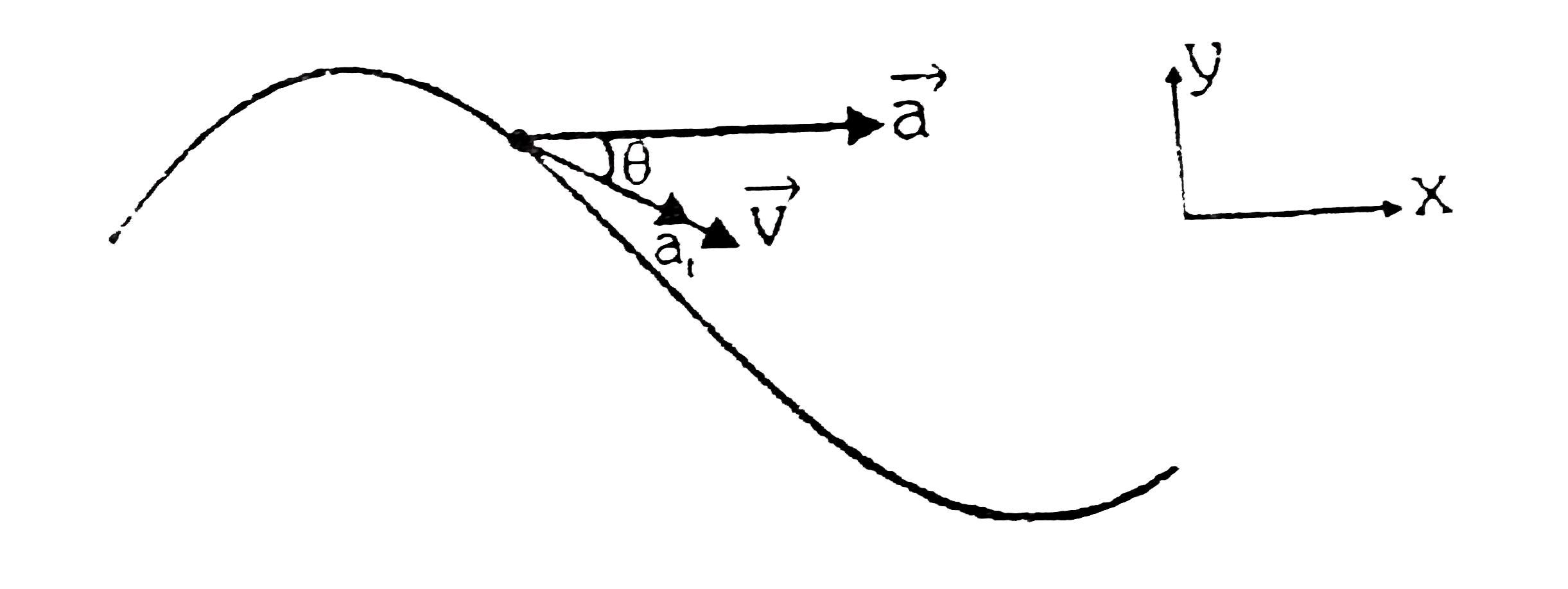The position vector of an object moving in X-Z plane is .
Find its (i) velocity (ii) speed (iii) Acceleration as a function of time.Solution in Gujrati
The correct Answer is:(i) (ii) (iii)
(i) (ii)
(iii)
Topper's Solved these Questions
- MISCELLANEOUSBOOK - ALLEN CHAPTER - MISCELLANEOUSEXERCISE - Exersice-4[B]
14 Videos
- MISCELLANEOUSBOOK - ALLEN CHAPTER - MISCELLANEOUSEXERCISE - EXERCISE-5(A)
15 Videos
- MISCELLANEOUSBOOK - ALLEN CHAPTER - MISCELLANEOUSEXERCISE - DATA SUFFICIENCY QUESTIONS
3 Videos
- KINEMATICS (MOTION ALONG A STRAIGHT LINE AND MOTION IN A PLANE)BOOK - ALLEN CHAPTER - KINEMATICS (MOTION ALONG A STRAIGHT LINE AND MOTION IN A PLANE)EXERCISE - BEGINNER S BOX-7
8 Videos
- PHYSICAL WORLD, UNITS AND DIMENSIONS & ERRORS IN MEASUREMENT BOOK - ALLEN CHAPTER - PHYSICAL WORLD, UNITS AND DIMENSIONS & ERRORS IN MEASUREMENT EXERCISE - EXERCISE-IV
7 Videos
Similar Questions
If Energy (E), velcity (v) and time (T) are fundamental units. What will be the dimension of surface tension ?
View SolutionIdentify the pair whose dimensions are equal
View SolutionWhat is the angle between →a and →b :
(i) Magnitude of →a and →b are 3 and 4 respectively.
(ii) Area of triangle made by →a and →b is 10.
View SolutionA football player kicks a ball at an angle of 30∘ with an initial speed of 20 m/s. Assuming that the ball travels in a vertical plane, calculate (a) the time at which the ball reaches the highest point (b) the maximum height reached (c) the horizontal range of the ball (d) the time for which the ball is in the air, (g=10m/s2)
View SolutionAssertion : Gravitational forces do not depend on the medium between the masses.
Reason : Mediating particle responsible for gravitational force is graviton.
View SolutionA particle travels so that its acceleration is given by →a=5costˆi−3sintˆj. If the particle is located at (−3,2) at time t=0 and is moving with a velocity given by (−3ˆi+2ˆj). Find
(i) The velocity [→v=∫→a.dt] at time t and
(ii) The position vector [→r=∫→v.dt] of the particle at time t(t>0).
View SolutionA particle moves in such a way that its position vector at any time t is →r=tˆi+12t2ˆj+tˆk.
Find as a function of time:
(i) The velocity (d→rdt) (ii) The speed (∣∣∣d→rdt∣∣∣) (iii) The acceleration (d→vdt)
(iv) The magnitude of the acceleration
(v) The magnitude of the component of acceleration along velocity (called tangential acceleration)
(v) The magnitude of the component of acceleration perpendicular to velocity (called normal acceleration).
View SolutionAssertion:− If a particle is acted upon by an external force its momentum must change
Reason:−∣∣∣d→vdt∣∣∣ is ALWAYS equal to ddt|→v|
Here →v has its usual meaning.
View SolutionA particle moves with a tangential acceleration at=→a.ˆv where →a=(5ˆi)m/s2. If the speed of the particle is zero at x=0, then find v (in m/s) at x=4.9m.

View Solutionvec(r)=2that(i)+3tvec(2)hat(j) . Find vec(v) and vec(a) where vec(v)=(dvec(r))/(dr) , vec(a)=(dvec(v))/(dt)
View SolutionA particle moves so that its position vector varies with time as vec(r)=A cos omega t hat(i) +A sin omega t hat(j) . If (dvec(r))/(dt) gives instantaneous velocity. Find the initial velocity of particle.
View SolutionWhat does d|→v|/dt and |d→v/dt| represent ? Can these be equal ? Can. (a) d|→v|/dt=0 while |d→v/dt|≠0 (b) d|→v|/dt≠0 while |d→v/dt|=0?
View SolutionA particle is moving with a position vector, →r=[a0sin(2πt)ˆi+a0cos(2πt)ˆj]. Then -
View SolutionA particle of charge q and mass m released from origin with velocity →v=v0ˆi into a region of uniform electric and magnetic fields parallel to y-axis. i.e., →E=E0ˆjand→B=B0ˆj. Find out the position of the particle as a functions of time
Strategy : Here →E∣∣→B
The electric field accelerates the particle in y-direction i.e., component of velocity goes on increasing with acceleration
ay=Fym=Fem=qE0m
The magnetic field rotates the particle in a circle in x-z plane (perpendicular to magnetic field) The resultant path of the particle is a helix with increasing pitch.
Velocity of the particle at time t would be
→v(t)=vxˆi+vyˆj+vzˆk
View SolutionIf the velocity is →v=2ˆi+t2ˆj−9→k, then the magnitude of acceleration at t = 0 . 5 s is :
View SolutionThe acceleration of a particle is given by vec(a) = [2 hat(i) + 6t hat(j) + (2pi^(2))/(9) cos ((pi t)/(3)) hat(k)] ms^(-2) . The initial conditions are vec(r ) (0) = x(0)hat(i) + y(0) hat(j) + z(0) hat(k) = vec(0), vec(v) (0) = (2 hat(i) + hat(j)) ms^(-1) wher vec(v) (0) = (d hat(i) (0))/(dt) = (dx (0))/(dt) hat(i) + (dy(0))/(dt) hat(j) + (dz(0))/(dt) hat(k) The position vector at t= 2 s is
View Solution
